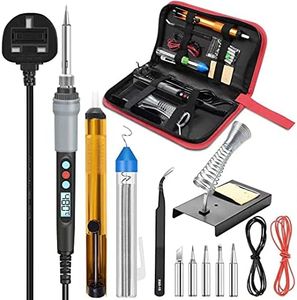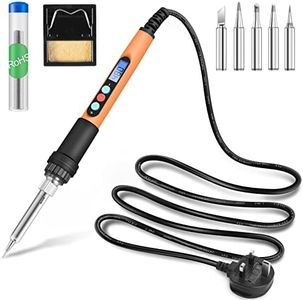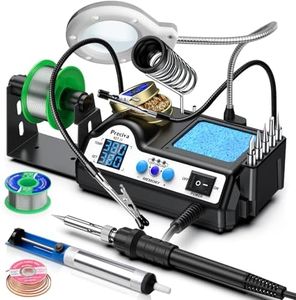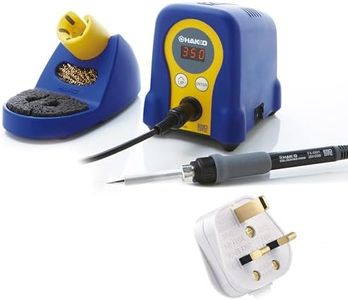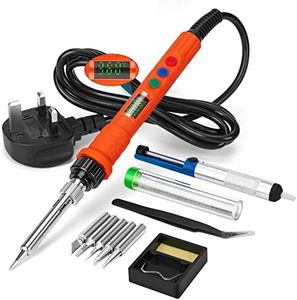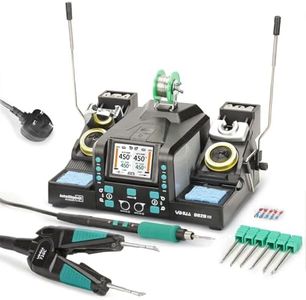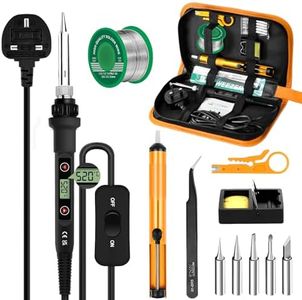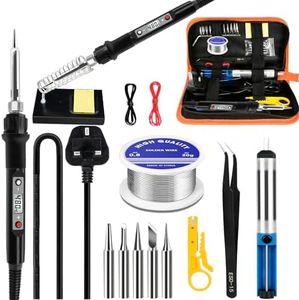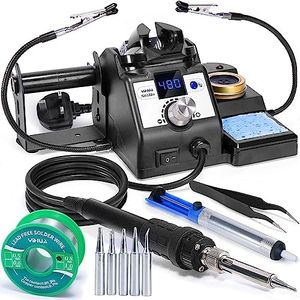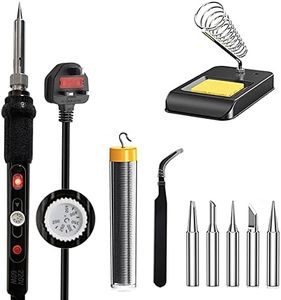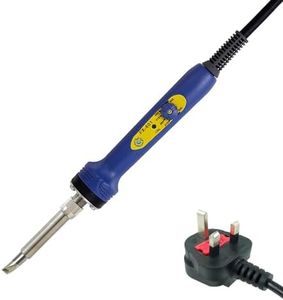We Use CookiesWe use cookies to enhance the security, performance,
functionality and for analytical and promotional activities. By continuing to browse this site you
are agreeing to our privacy policy
10 Best Soldering Irons
From leading brands and best sellers available on the web.Recommended lists
Buying Guide for the Best Soldering Irons
Choosing the right soldering iron is crucial for both beginners and experienced users, as it can significantly impact the quality and ease of your soldering projects. When selecting a soldering iron, consider the type of work you will be doing, the materials you will be working with, and your level of experience. Understanding the key specifications will help you make an informed decision that suits your needs.Power (Wattage)The power or wattage of a soldering iron determines how quickly it can heat up and how well it can maintain its temperature during use. Higher wattage irons (40-60 watts) heat up faster and are better for larger joints or heavier work, while lower wattage irons (20-30 watts) are suitable for delicate electronics and smaller tasks. Choose a wattage based on the size and type of your projects; for general electronics work, a medium wattage is often ideal.
Temperature ControlTemperature control allows you to adjust the heat of the soldering iron to suit different tasks and materials. Some soldering irons have fixed temperatures, while others offer adjustable settings. Adjustable temperature control is important for versatility, as different soldering tasks require different temperatures. If you work with a variety of materials or need precision, opt for a soldering iron with adjustable temperature settings.
Tip Type and SizeThe tip of a soldering iron is the part that comes into contact with the workpiece, and its type and size can affect the precision and quality of your work. Fine tips are ideal for small, detailed work like circuit boards, while larger tips are better for bigger joints. Consider the type of projects you will be working on and choose a tip that matches your needs. Some soldering irons offer interchangeable tips, providing flexibility for different tasks.
Ergonomics and DesignThe ergonomics and design of a soldering iron can impact comfort and ease of use, especially during extended periods of work. Look for a soldering iron with a comfortable grip and a lightweight design to reduce hand fatigue. A well-designed soldering iron can improve your precision and control, making it easier to achieve high-quality results.
Heating Element TypeThe heating element in a soldering iron affects how quickly it heats up and how well it maintains temperature. Ceramic heating elements are known for fast heating and good temperature stability, while metal heating elements may take longer to heat up. If you need quick heat-up times and consistent performance, consider a soldering iron with a ceramic heating element.
Corded vs. CordlessCorded soldering irons are powered by electricity and offer consistent performance, while cordless models are battery-powered and provide greater mobility. Cordless soldering irons are convenient for on-the-go repairs or when working in areas without easy access to power outlets. Consider where and how you will be using the soldering iron to decide between corded and cordless options.
